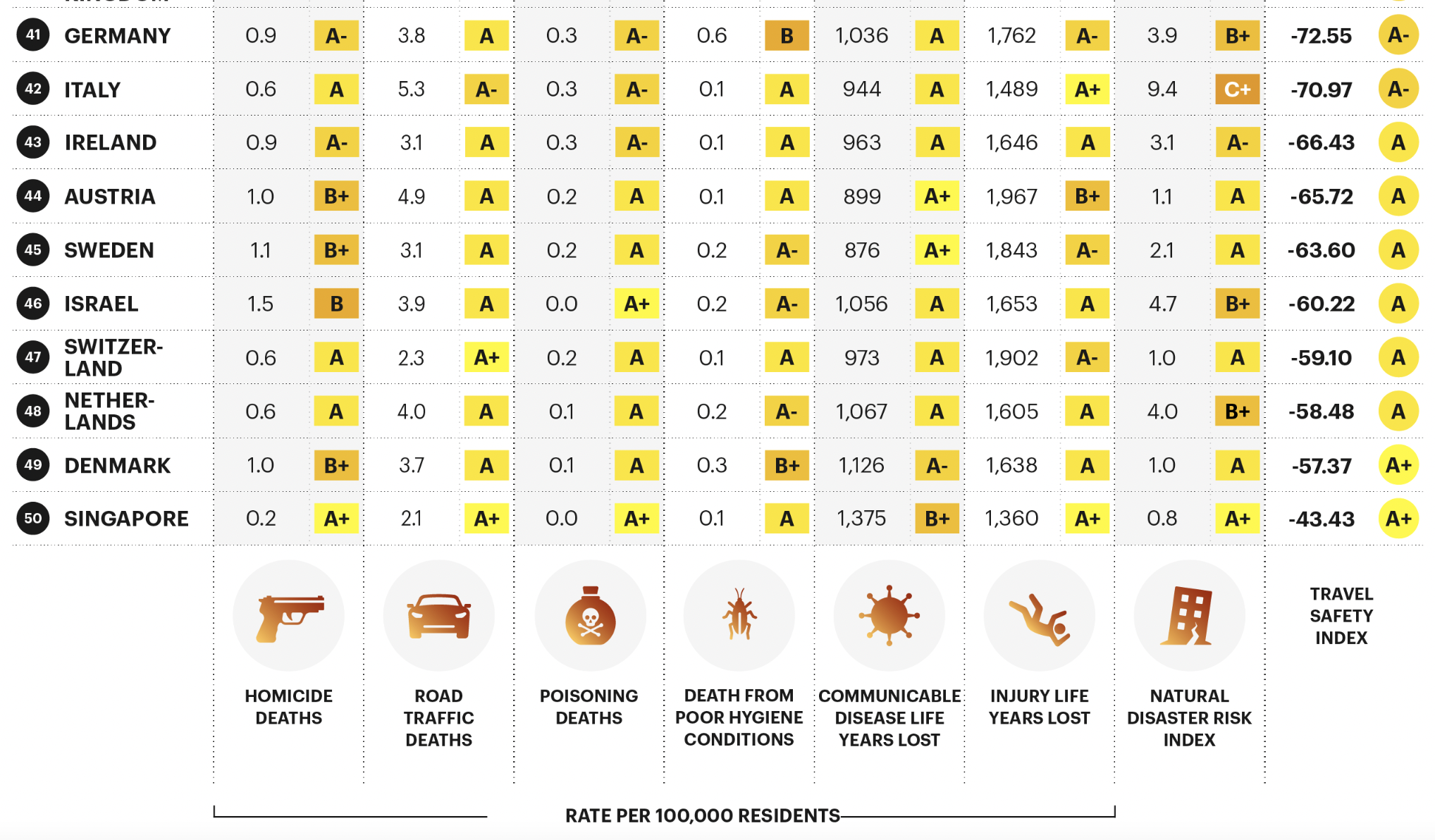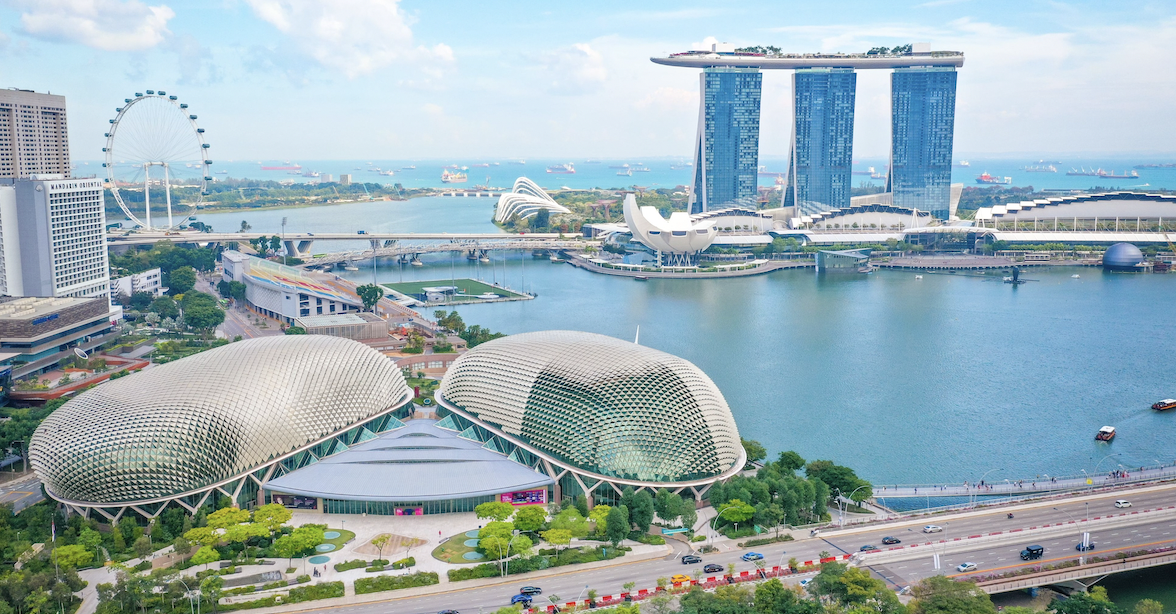Follow us on Telegram for the latest updates: https://t.me/mothershipsg
Singapore has come out tops among the list of country for safe travels.
The rankings were published on Dec. 1, 2022 in an article titled "The 50 Most (& Least) Deadly Travel Destinations".
It was done by The Swiftest, a San Francisco-based research start-up that uses data analytics to explore societal and environmental issues, as well as provides information for insurance purchases.
Out of 50 of the most visited countries, these are the 20 that scored the best in the report's Travel Safety Index (descending order):
- Singapore
- Denmark
- Netherlands
- Switzerland
- Israel
- Sweden
- Austria
- Ireland
- Italy
- Germany
- United Kingdom
- Spain
- Portugal
- Greece
- Japan
- France
- Czech Republic
- Belgium
- Australia
- Croatia
A paragraph explaining why Singapore is the safest reads,
"What makes Singapore so safe? Well, crime does not pay in Singapore. The consequences for committing crimes in Singapore are incredibly high, even for “smaller” crimes. This, combined with high surveillance and police presence, makes Singapore the world’s safest country for travel."
On the other hand, the 20 most dangerous destinations are (descending order):
- South Africa
- India
- Dominican Republic
- Mexico
- Brazil
- Cambodia
- Philippines
- Saudi Arabia
- Vietnam
- Indonesia
- China
- Thailand
- Romania
- Iran
- Morocco
- Uzbekistan
- Kyrgyzstan
- Malaysia
- Argentina
- United States
How the research was conducted
The Travel Safety Index is derived from comparing seven factors in the 50 countries.
Russia and Ukraine were omitted from the study due to ongoing conflicts in the region, The Swiftest website stated.
All factors were given up to 100 points each (except the natural disaster score, which was based only upon 50 points), and the higher the score, the safer the country.
These are the factors:
1. Homicide Rate (0-100 points) – The number of intentional homicides per 100,000 people.
2. Road Traffic Death Rate (0-100 points) – The estimated road traffic death rate per 100,000 people.
3. Poisoning Death Rate (0-100 points) – The mortality rate attributed to unintentional poisonings per 100,000 people.
4. Unsanitary Conditions Mortality Rate (0-100 points) – The mortality rate that is attributed to unsafe sanitation, unsafe water, and a lack of proper hygiene per 100,000 people.
5. Life Years Lost Due to Communicable Diseases (0-100 points) – The number of life years lost due to infectious diseases (adjusted for disabilities) per 100,000 people.
6. Life Years Lost Due to Injury (0-100 points) – Age-standardized and disability-adjusted life years lost due to injuries (including conflict, violence, and self-harm) per 100,000 people.
7. Natural Disaster Risk (0-50 points) – Based on the risk of a natural disaster such as earthquakes, floods, or cyclones, as well as the ability of the country to handle a disaster should it occur.
The statistics are pulled from international bodies like World Bank, World Health Organisation, and United Nations Office on Drugs and Crime.
There are, of course, limitations to the study.
Researchers acknowledge that a traveller's exposure to risk is subject to many variables, which are impossible to thoroughly account for.
More importantly, even within the country, the safety levels can vary greatly depending on which area the individual visits, and what type of travel they are choosing.
For instance, staying at an all-inclusive luxury resort is often less risky than staying in a high-crime area, the article pointed out.
Check out the gradings for the top 10 countries below, or read the whole article here.
 Image via The Swiftest
Image via The Swiftest
Photo by Meriç Dağlı on Unsplash
If you like what you read, follow us on Facebook, Instagram, Twitter and Telegram to get the latest updates.
